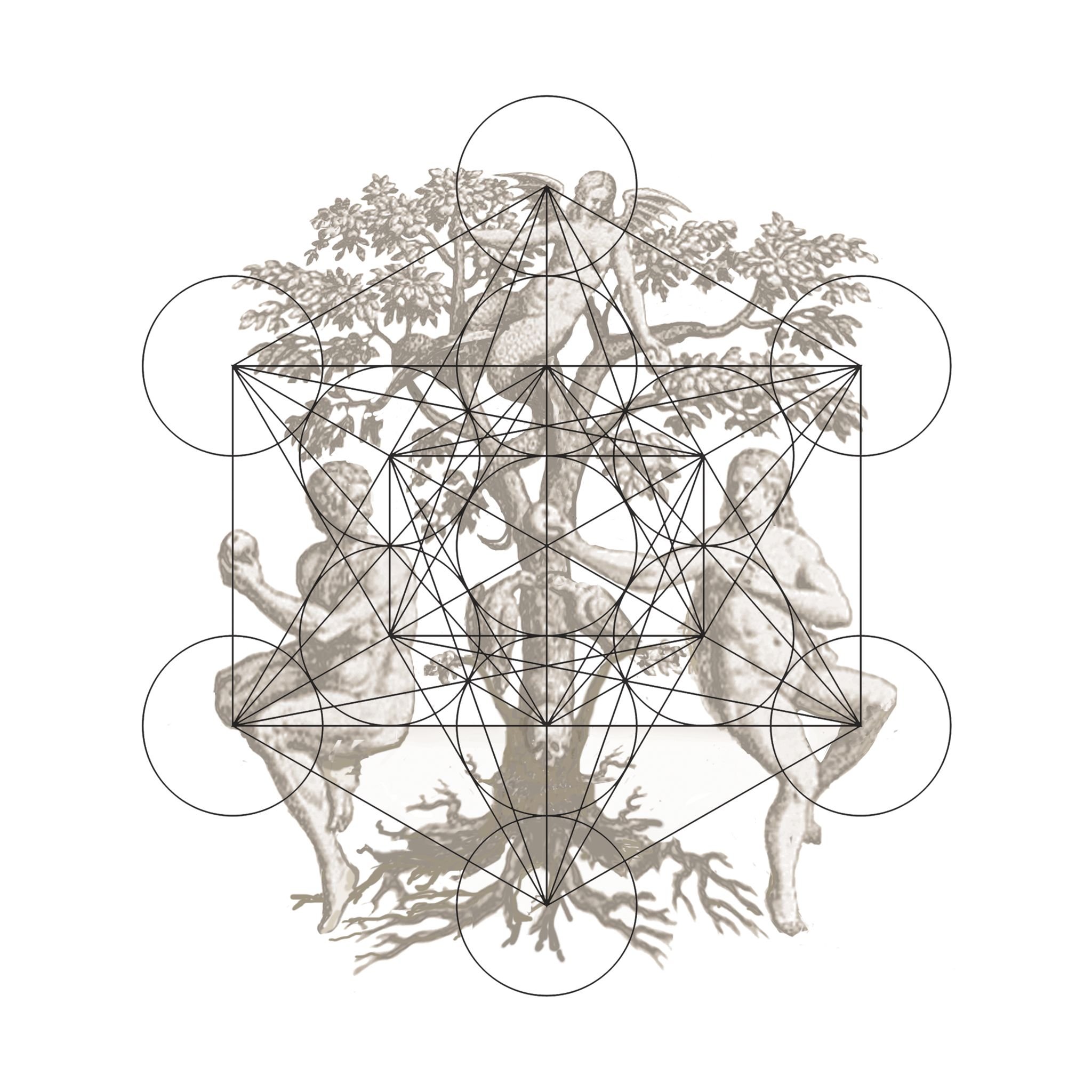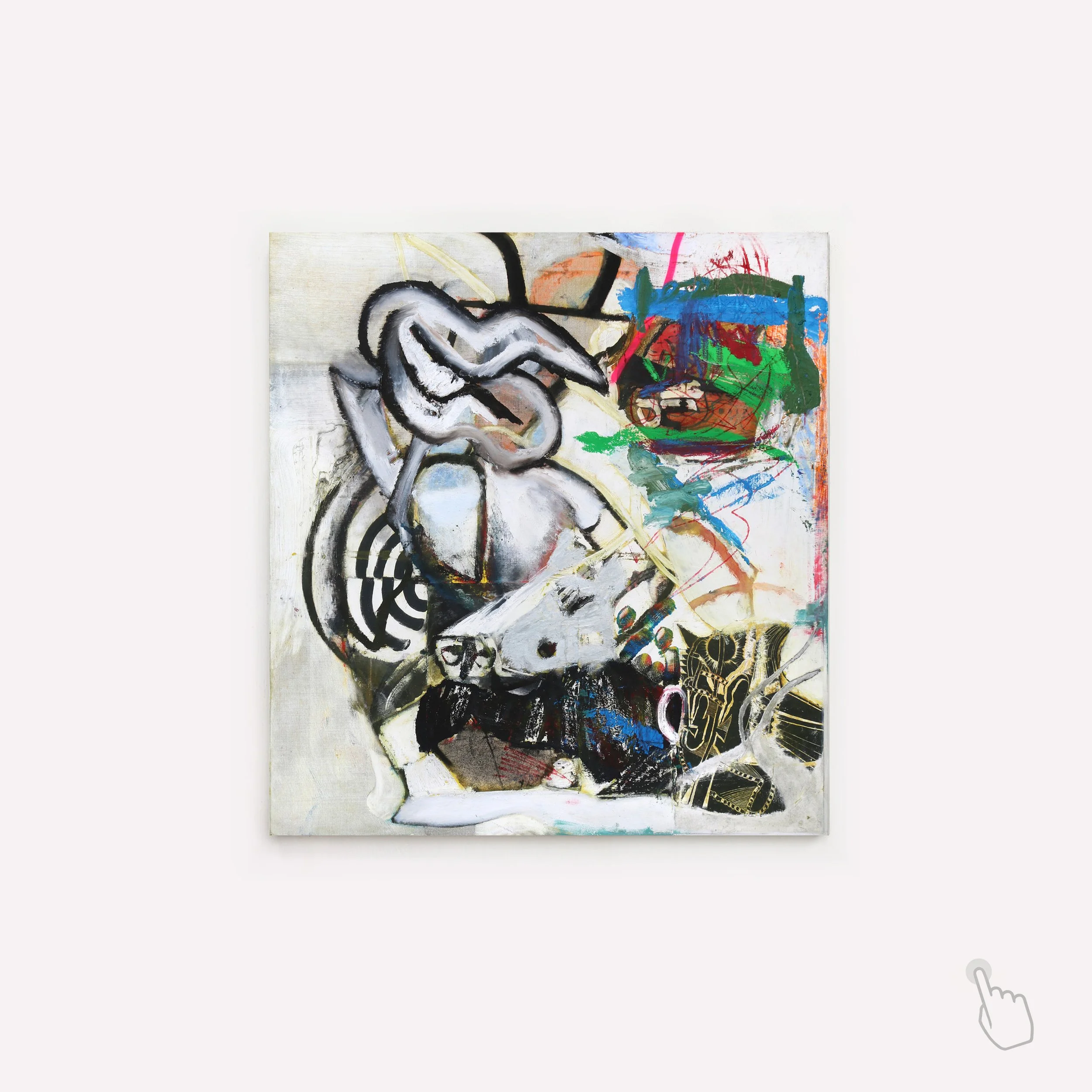
EXHIBITION DATES : 16/7 - 29/8/2022
FOR GUARDIAN FEATURE : click here
PREFACE :
Anima Mundi are proud to present ‘Coda for an Obol’, an existentially framed and hugely ambitious solo exhibition that Arthur Lanyon has been working on for the past three years which will be shown on floors 1,2 & 3 of the gallery.
The exhibition examines, through painting, a sense of deep personal purpose and the artists own sense of legacy, perhaps in natural response to the passing of his own father Matthew Lanyon (Son of internationally acclaimed artist Peter Lanyon) in 2016 and the birth of his first son during the period that the exhibition was made…
“The poems coda salutes the power of the transformative imagination to recover meaning in the world from all we see and remember.”
ARTIST STATEMENT :
When Mr broken motif and Mrs empty emblem try for a baby archetype in the making, their moving bodies mold manifold shapes under canvas. Beyond base materiality, the now pregnant symbol clothes the pressure, birthing the possibility for images to be animated internally through layers. There is this underworld of methylated spirit, medium fine, heavy grit, razor blades scratching to get at the beeswax, clawing the turpentine tree, tip toeing around pools of cadmium red, flashing lead white underbellies and digging self-levelling paint for smooth bones. Here lye properties made memorable for the effect they had on one another. Defy the usual cuts, drag an oil stick across pleats off paint like tailor’s chalk, measure arm, wing, finger, feather, toe and claw, foot and paw…
Read more/less
Human perception is not just about seeing what is actually present in the world around us. It's also heavily influenced by our motivations and expectations. When the density of a painting reaches certain points, it behaves less like a group of individual parts and more like a fluid. Momentum rolls clean edged shapes into something, altogether, more travelled. If this inspires my invested gaze, all I ask from the worn and woven surface, is that it triggers an equal and opposite reaction in me, emboldening a fresher more invigorated vision.
A painting title leaning on association, derives from digging over the after image; The sky of 'Lycabettus’, held aloft by the heads of a doctor and nurse, shines through an x-ray inspired geological cross-section. Just below is a sunburst, bolt-action rifle butt. To the left a hot bird fans the flames of two valiant lupines centre stage. They're animated with sound lines and not knowing if they’re playing or fighting, I will call it play-fighting. It turns out the cross-section was cut and collaged from a history book on haunted rocks. In Reuben B. Frost's 'The Stones Can Speak’; "The granite on top of the Acropolis, worn smooth from millions of feet, became a history book; the rock rising above the timber line was now Mt. Lycabettus." Which translates as 'the hill that is walked by wolves’.
Décollage gets grizzly at 12,000 rpm. Inching urgently out of the sandstorm come Pac-Man power lines and gnawn out windows. From back and beyond, tracks of turquoise pigment prop up the painted walls of 'House Almeria’ like vines, but the Queen of Sheba, shrouded by her caravan of gifts, looks discontented with the genie and the hot gazpacho. My make believe morphs in and out of these paintings once made, adding up to everything and nothing - all interpretations are wildly subjective. Squashed in with abstraction and picked out with drawing, an open system in a bounded area enfolds this ambiguity. Curbing the boredom by complicating perceptual expectations.
Things appear to come and go until apotheosis arrives unannounced. I think of this moment as a form of coda. The musicologist Charles Burkhart suggests that the reason codas are necessary, is that, in the climax of a "particularly effortful passage", often an expanded phrase is created by "working an idea through to its structural conclusion" and that, after all this momentum is created, a coda is required to "look back" on the main body, and allow listeners to "take it all in", and in turn "create a sense of balance.”
Leaning in, lateral thinking helps cut the knot so both ends lead to a last and final kiss. Looking up, John Bevis' celestial maps blaze the trail, and down here, under the fringe, I've just read 242 pages on a pair of Poussin paintings as my bamboo graffiti is healing. Symbols clock-in, so flick back elephant hair like bristles on a yard brush and turn up the musical frisson. Fast forward and what is fashioned at the close becomes cursive and integrated - a paintings' ending becomes it's beginning once witnessed - straight line becomes circle as serpent swallows tail. This now serves as part of my broader vernacular for the end game. The thought of making one last drawing begs the question; what might the ferryman value in lieu of the obol? My only offer, whilst I am still here, comes from continuing to orbit this ideal in the hope of capturing something eternal.
Arthur Lanyon, June 2022
EXHIBITION ARTWORKS (CLICK FOR FULL DETAILS) :
“What we call the beginning is often the end.
And to make an end is to make a beginning.
The end is where we start from”
ONLINE CATALOGUE :
BIOGRAPHY :
Arthur Lanyon paintings combine intuitive figurative motifs with an emotive, gestural, abstracted language. His energetic works are sited on a physical and metaphysical cross roads, like a belay between numerous visual and emotional pinnacles. They offer a progressive link between the outside world, the inner architecture of the brain, altered states of consciousness, memory and the unencumbered essence of child’s drawing.
Arthur Lanyon is a British artist born in Leicester, England in 1985. He lives and works from a studio near Penzance, Cornwall. Born in to an artistic family, his father was the painter Matthew Lanyon and his grandfather the celebrated, influential and world renowned modernist painter Peter Lanyon. He won the Hans Brinker Painting Award in Amsterdam in 2007 and gained a first class degree in Fine Art from Cardiff University in 2008. Upon graduating he was featured in Saatchi’s ‘New Sensations’ exhibition. In 2014, his work was in the long-list for the Aesthetica Art Prize and was included in the award’s published anthology. His debut Anima Mundi solo exhibition ‘Return to Whale’ opened in 2016, which was followed by ‘White Chalk Lines in 2018. His latest exhibition ‘Arcade Laundry’ opened in 2020. Works have been exhibited extensively, notably including Untitled Art Fair in Miami; Zona Maco, Mexico City; the Saatchi Gallery London; The House of St Barnabas, London; CGK, Copenhagen; Tat Art, Barcelona and Herrick Gallery, Mayfair. Arthur Lanyon paintings are held in private collections worldwide.













































